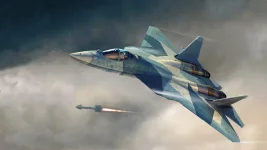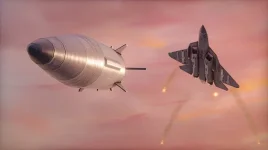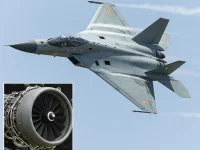- Views: 4K
- Replies: 21
In a major strategic proposal, Russia has offered to equip the Indian Air Force's (IAF) fleet of Su-30MKI fighter jets with the advanced AL-41 engine, the same powerplant used in its fifth-generation Su-57 stealth fighter.
According to defence sources, the proposal includes licensed production of the engine in India, aiming to significantly enhance the capabilities of the IAF's primary combat aircraft.
The plan suggests that Hindustan Aeronautics Limited (HAL) would manufacture the new engines at its Nashik facility, which currently handles the production of the Su-30MKI's existing AL-31FP engines.
This engine upgrade is a central component of the IAF's ambitious "Super Sukhoi" modernization program.
The AL-41 engine represents a substantial technological leap over the AL-31FP, delivering greater thrust, improved fuel efficiency, and superior agility, which would elevate the Su-30MKI's performance closer to that of a next-generation fighter.
This proposal aligns with a comprehensive upgrade initiative for an initial 84 Su-30MKI aircraft, approved by India's Defence Acquisition Council in November 2023.
The project, valued at approximately ₹66,829 crore (US$7.9 billion), involves integrating advanced avionics, indigenous radar systems, and state-of-the-art weaponry, with HAL serving as the lead integrator.
The offer strongly supports India's long-term goal of self-reliance in defence manufacturing under the "Make in India" initiative.
Local production of the powerful AL-41 at HAL's Nashik division would leverage the facility's two decades of experience in assembling Su-30MKI aircraft and their engines.
The Nashik plant possesses the necessary infrastructure and skilled workforce, making it ideally suited to absorb the new technology.
This move would also revitalize the facility, which recently secured an order for 12 additional Su-30MKI jets, reinforcing its critical role in India's aerospace and defence ecosystem.
A key benefit of the Russian proposal is the AL-41 engine's design compatibility with the existing Su-30MKI airframe. This would allow for a more straightforward integration process, potentially reducing the time and cost associated with major structural modifications.
At the Aero India 2025 exhibition, Vadim Badekha, the head of Russia’s United Aircraft Corporation, has already confirmed the offer. "We are offering the new AL-41 engine as part of the Sukhoi-30 upgrade to India," he stated, emphasizing its capacity to improve the aircraft's speed and overall combat effectiveness.
The engine features advanced technologies like a Full Authority Digital Engine Control (FADEC) system, which provides optimal performance across the flight envelope.
The proposed upgrade comes at a crucial time as the IAF seeks to maintain a technological advantage amid evolving regional security dynamics.
With around 260 aircraft, the Su-30MKI is the backbone of India's air combat fleet and is projected to remain in service for several decades.
Integrating the AL-41 engine, along with other planned enhancements like the indigenous Uttam Active Electronically Scanned Array (AESA) radar and Astra beyond-visual-range missiles, would provide a formidable boost to the fleet's combat range, lethality, and survivability.
Despite the attractive performance benefits, India is conducting a thorough evaluation of the offer. Officials are carefully weighing the potential costs, integration timelines, and geopolitical implications, including the risk of sanctions under the U.S. Countering America's Adversaries Through Sanctions Act (CAATSA).
Furthermore, domestic alternatives are also under consideration. These include HAL's own efforts to enhance the existing AL-31FP engine, which has already achieved 54% indigenous content, as well as the development of a more powerful variant that could offer a cost-effective and self-reliant path for modernization.
The final decision will depend on a careful balance between acquiring cutting-edge technology and strengthening indigenous defence capabilities.




